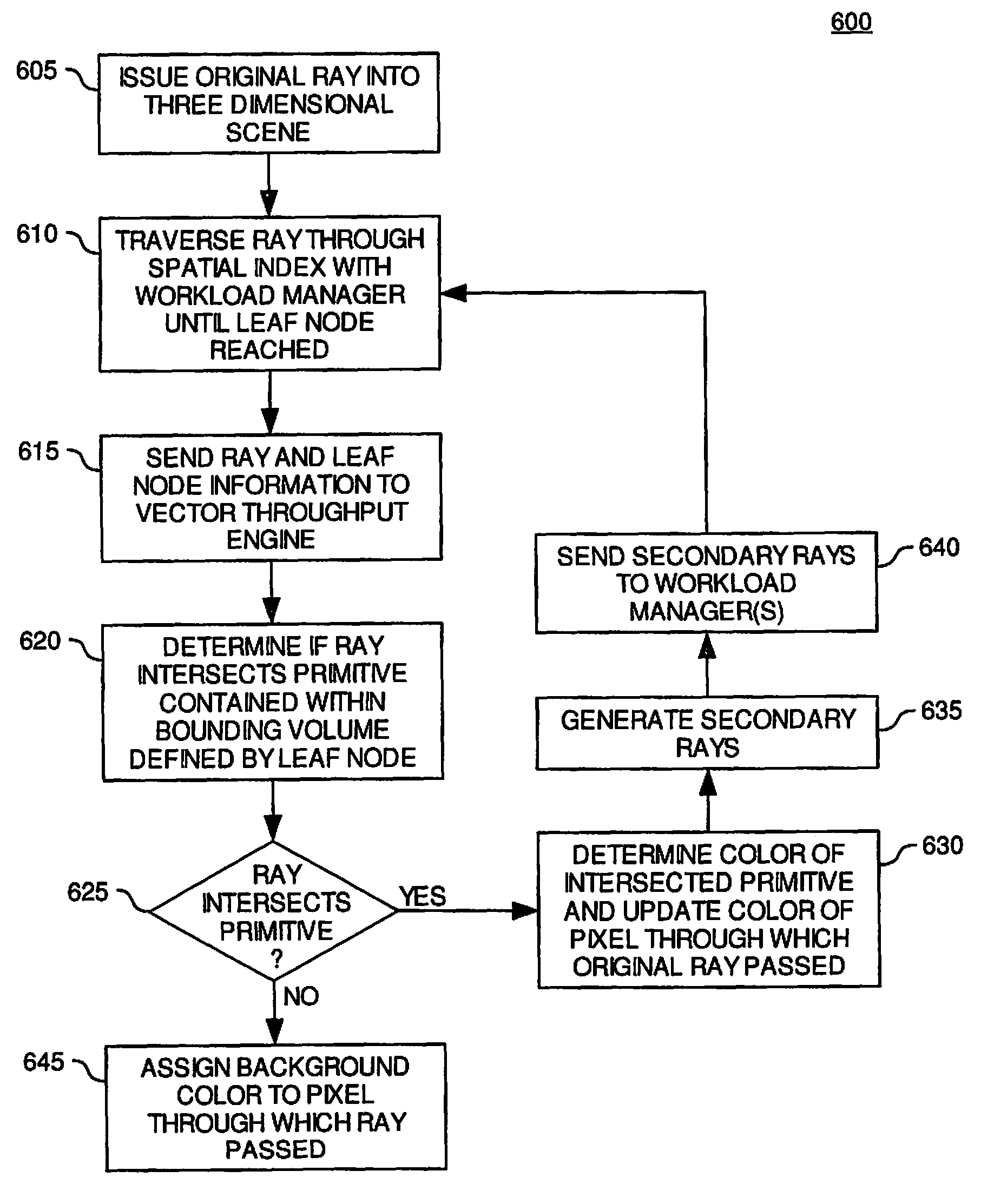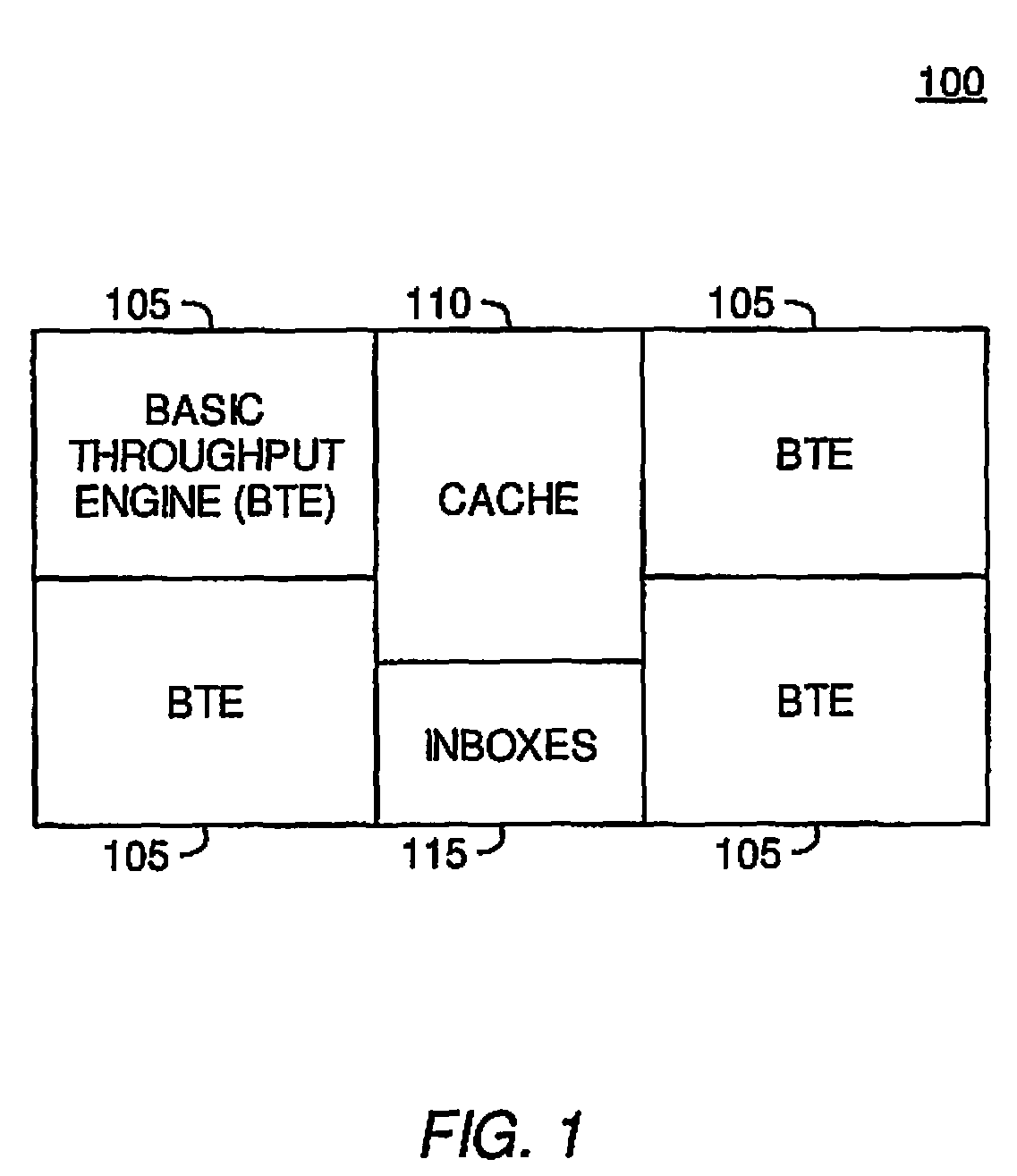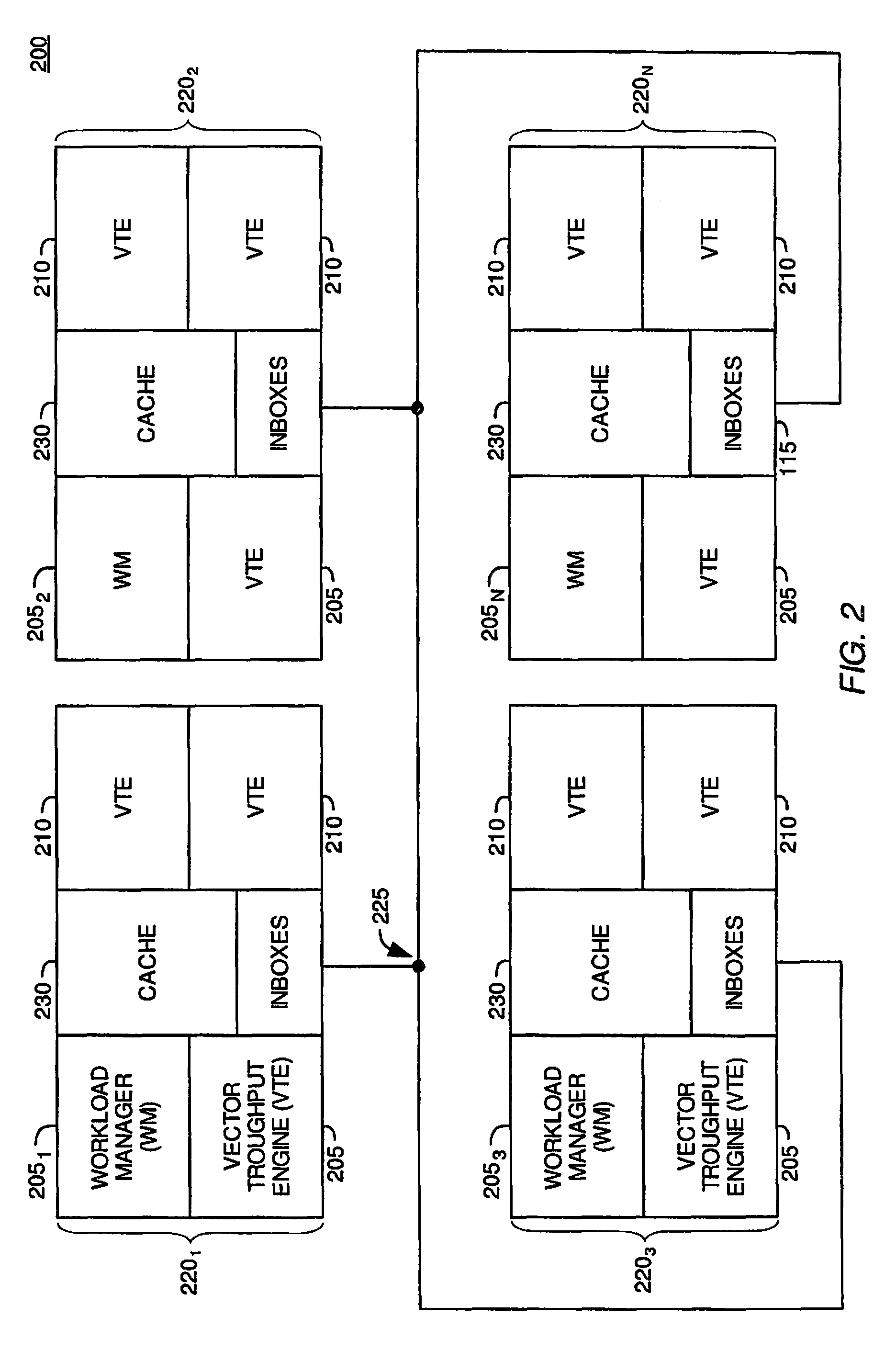Method for reducing network bandwidth by delaying shadow ray generation
a network bandwidth and shadow ray technology, applied in the field of image processing, can solve the problems of rasterization suffering from some drawbacks, modern monitors display images, and use relatively low amounts of computational power
- Summary
- Abstract
- Description
- Claims
- Application Information
AI Technical Summary
Benefits of technology
Problems solved by technology
Method used
Image
Examples
Embodiment Construction
[0027]The present invention provides methods and apparatus in a ray tracing image processing system for generating secondary rays in response to a ray-primitive intersection. According to embodiments of the invention, a first processing element in the image processing system may generate a portion of secondary rays in response to a ray-primitive intersection. Furthermore, a second processing element in the image processing system may generate second portion of secondary rays in response to the ray-primitive intersection. According to one embodiment of the invention, the first processing element may generate reflected and refracted rays in response to a ray-primitive intersection, and the second processing element may generate shadow rays in response to the ray-primitive intersection. The first processing element may send the ray-primitive intersection point to the second processing element to indicate that the second processing element may generate the shadow rays. By generating a p...
PUM
 Login to View More
Login to View More Abstract
Description
Claims
Application Information
 Login to View More
Login to View More - R&D
- Intellectual Property
- Life Sciences
- Materials
- Tech Scout
- Unparalleled Data Quality
- Higher Quality Content
- 60% Fewer Hallucinations
Browse by: Latest US Patents, China's latest patents, Technical Efficacy Thesaurus, Application Domain, Technology Topic, Popular Technical Reports.
© 2025 PatSnap. All rights reserved.Legal|Privacy policy|Modern Slavery Act Transparency Statement|Sitemap|About US| Contact US: help@patsnap.com



